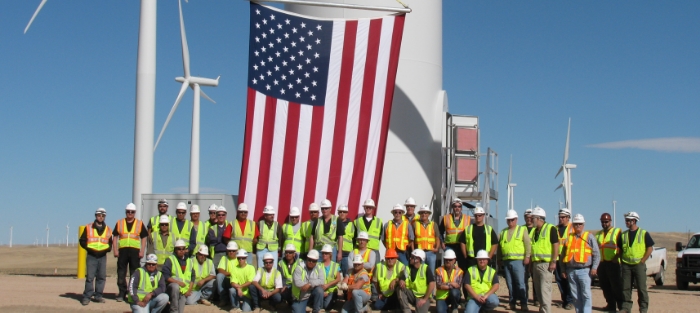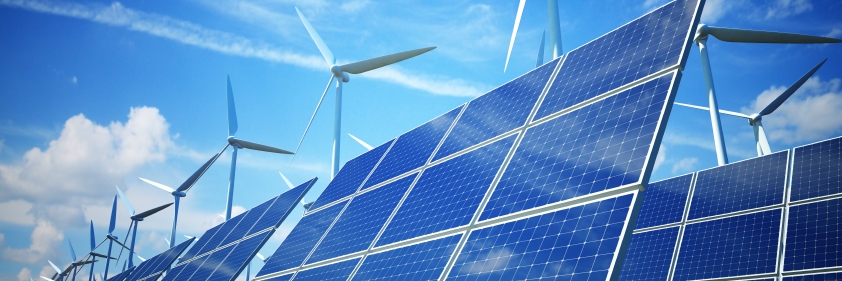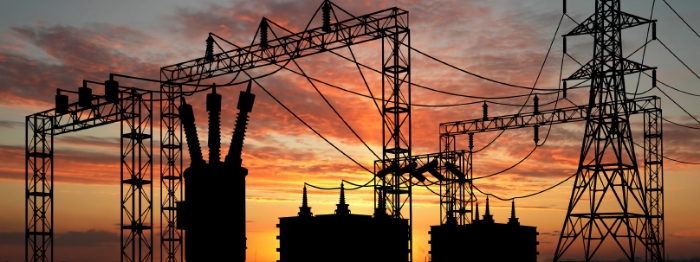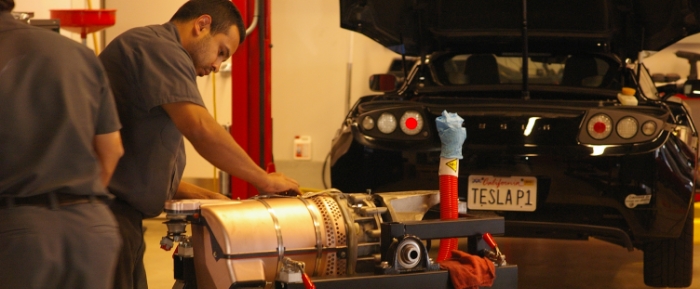To wrap up the year, we are taking a look back at 2014. Make sure you didn’t miss the other Year In Review pieces published this week: Top 10 Utility Commission Actions of 2014 and Top Trends in State Energy Legislation.
2014 was a big year for advanced energy. Prices for advanced energy generation technologies kept dropping, employment kept growing, and the industry opened new avenues of expansion. Plus, several key policy changes contributed to the rapid growth an already-expansive sector. Here we present the top 10 news developments of this past year, and Advanced Energy Perspectives’ coverage of them.

1) EPA Writes the Rules on Carbon Regulation
In January we reported that the Environmental Protection Agency was gearing up to release its first-ever greenhouse gas performance standards for existing power plants under the Clean Air Act. By May we had a clearer picture of what the standards would look like, and how they could increase opportunities for both supply- and demand-side advanced energy technologies, and AEE released a report detailing 40 technologies that have the capacity to reduce greenhouse gas while simultaneously growing the economy. When the standards were officially released in June, politicians and pundits scrambled to make their voices heard on what soon became known as the Clean Power Plan. By September, we were starting to see how states would respond to the proposed regulations. In November, AEE submitted its comments on the draft proposal, stating that advanced energy can contribute much more to emission reduction than the draft of the Clean Power Plan contemplates, and provide economic benefits at the same time. AEE filed additional comments just before the December 1 deadline.
For AEE’s full coverage of the Clean Power Plan, click here. To download AEE's full comments, click here.

2) New York Begins Building the 21st Century Electricity Grid
We’ve said it before and we’ll say it again: America’s electrical infrastructure is aging, and it is time to bring it into the 21st Century. Utility business and regulatory model changes are necessary to accelerate innovation and advanced energy deployment, in order to meet the multiple challenges facing the industry. In 2014 we began to see that happening across the country.
New York, through Reforming the Energy Vision, moved toward substantive regulatory changes that would modernize the state’s energy system and greatly expand opportunities for advanced energy companies. AEE facilitated an Energy Industry Working Group to outline possible changes and produced a benefit-cost analysis that outlined a new way to quantify the value of distributed energy resources. New York also opened up its Green Bank, leveraging public dollars to attract private sector investment.
For more on what a 21st Century Electricity System would look like, read this three-part series by Ryan Katofsky and Matt Stanberry on Modernizing the Electric Grid.

3) Advanced Energy Means Huge Employment in California and Iowa
We have long known that advanced energy means jobs, but in 2014 we began to understand just how many. Advanced Energy Economy Institute released two employment surveys for the states of California and Iowa just this month. Among the findings: California has more than 431,000 advanced energy employees working at more than 40,000 businesses statewide, making advanced energy a bigger market segment in the state than Hollywood. Iowa has 22,600 employees in advanced energy – a more than the Iowa crop production industry.
Check out more findings from the employment surveys. Click the cover below to download:

4) Offshore Wind, on the horizon for more than a decade, now closer than ever
Offshore wind is coming to the U.S., as soon as 2015. “This is the year it happens,” Deepwater Wind CEO Jeff Grybowski said in October. “We are nine months away from the installation of our first foundations.”
It’s about time. Cape Wind, the first offshore wind project to begin development, dates back more than a decade. Cape Wind had a series of successes this year, including lining up some investment and a U.S. DOE loan guarantee, and securing power purchase agreements with utilities National Grid and NStar, but ended the year on an uncertain note, declaring it would not be able to close financing on the project by year’s end. Currently, the U.S. has 14 offshore wind projects in development.
Technically, the first permanent offshore wind turbines in U.S. might float. In January, the Maine PUC voted last month to approve a power-purchase contract for a pilot project of floating offshore turbines, Maine’s Aqua Ventus project, which will include two floating 6 MW turbines. Offshore wind has also suffered some setbacks this year, especially the expiration of the Investment Tax Credit for offshore wind on January 1. (By the way, offshore wind was also #4 on last year’s Top 10 news list. Maybe next year we’ll be able to talk about construction!)

5) Solar and wind achieve cost parity
One incredibly important trend we saw developing for the advanced energy industry is the continued drop in the cost of solar and wind generation. This year, utilities and large energy users in the private sector started to choose advanced energy simply because it was cheaper.
In April, Citigroup declared that solar and wind are successfully “competing on costs” with fossil fuels in the U.S. In May, AEE Member Recurrent Energy announced that it was building the largest solar plant in Texas. “We’ve come to a place where costs are so low that we can offer a competitive price” for electricity on the Texas grid, said Recurrent Chief Executive Arno Harris. In October, a Bloomberg analyst reported that solar is “on track to be as cheap or cheaper than average electricity bill prices in 47 states” by 2016.

6) Energy Storage Moves Front and Center
Energy storage solves a fundamental mismatch between when the power is generated and when it’s used. That mismatch is acute with variable energy resources – electricity generated when the wind is blowing and the sun is shining – but it’s also why so much costly fossil-fuel generating capacity stands idle most of the year just for those few hours when it’s needed to meet peak demand. At the end of 2013, California mandated that the state’s investor-owned utilities buy more than 1.3 GW of energy storage, effectively kicking an industry that had been growing behind the scenes directly into the spotlight.
Among the energy storage announcements this year, AEE Member SunPower announced in June that it would become a “full-service energy service provider,” with a focus on battery-based backup storage systems for residential and commercial solar projects. In September, another AEE Member, Stem, contracted with Hawaiian Electric, the state’s largest utility to install a 1 MW networked storage pilot project. In November, Southern California Edison made the groundbreaking announcement that it would acquire 250 MW of storage as part of a larger strategy to acquire 2.2 GW of new generation assets. The project will result in the world’s largest electrochemical battery. Texas is also getting into the energy storage game… without a mandate from the state. Dallas-based Oncor Electric Delivery Co. is looking into investing more than $2 billion in a battery storage system.

7) Gigafactories for Tesla, SolarCity
2014 saw a new word enter the lexicon of advanced energy: Gigafactory. First Tesla Motors, and then SolarCity, set forth to build enormous manufacturing centers for advanced energy components in the U.S.
Tesla announced in February that it would be investing $5 billion in a Gigafactory to produce advanced batteries for electric vehicles “somewhere in the American southwest,” sparking a five-state bidding war between Arizona, Nevada, New Mexico, Texas, and California (a late entrant). Eventually, the company settled on Reno, Nevada. Click here to learn more about the decision to house the factory in Nevada, including a winning combination of convenience and political will. Plus: tax breaks!
Not to be outdone, in September AEE Member SolarCity announced that it, too, had broken ground on a Gigafactory, this one in Buffalo, NY. Once complete, the solar manufacturing facility will be three times the size of any other solar panel factory in the U.S., with production beginning by 2017.
(Elon Musk plays a leadership role in both companies. Will Musk be able to add introducing a new word to the English language to his long list of attention-getting accomplishments?)

8) Tax Policy: Dropping the Ball in 2014 – Picking It Up in 2015?
With tax extenders the football, Congress has been playing Lucy to the American public’s Charlie Brown all year long. On January 2, 2014, AEE’s Senior Vice President of Policy and Government Affairs, Malcolm Woolf, published an op-ed in The Hill calling on Congress to extend vital advanced energy tax credits that expired at the end of 2013. But the best Congress could do, at the very end of the session, was to pass a one-year extension that the Senate Finance Committee chairman said “doesn’t have the shelf life of a carton of eggs,” as those credits will expire again at the end of this month.
Not that lawmakers didn’t get plenty of prompting. In January, in the State of the Union Address, President Obama called for Congress to pass a “smarter tax policy,” including the expired advanced energy provisions. In February, Sen. Ron Wyden, the newly appointed chair of the Senate Finance Committee, spoke out about the need for tax extenders. The President’s proposed federal budget, released in March, would have made many advanced energy tax credits permanent. In April, tax committees in the House and Senate took up the topic of tax extenders, and the Senate Finance Committee approved a bill to extend tax credits. After that, the issue was left, along with many others, to the lame duck session. Post election day, we hoped that tax extenders would represent a bipartisan opportunity, but instead Congress dropped the ball.
The one-year extension – to December 31, 2014 – of tax provisions that expired on December 31, 2013, kept the tax code neat for the 2014 filing year, allowing certain advanced energy investments already made this year to qualify for tax credits, but it does nothing encourage such investments going forward. Most egregiously, the one-year extension of the Production Tax Credit, for which a project would have to “commence construction” by the end of this month to qualify, is effectively useless for wind energy developers. As a result, the United States will likely see a reduction in the amount of wind energy that goes into development in 2015.
The good news, if there is any, is that, with the tax extensions expiring in less than two weeks, the issue will be back before Congress next year. While this package didn’t do much for the advanced energy industry, there is significant bipartisan support for our industry. AEE will remain engaged on comprehensive tax reform, as well as next year’s tax extenders package. Let’s hope Congress doesn’t spend 2015 pulling the ball out from under the advanced energy industry.

9) The Year of the Advanced Automobile
Between Tesla Motors’ Gigafactory and the Chevy Volt’s claim to a billion miles driven, it’s been a good year for the electric vehicle. Beyond that, strides have been made by advanced automobiles of all stripes, including natural gas vehicles and vehicles capable of running on their own paint jobs and on a fuel that’s definitely bio in nature.

10) The Future is Now!
Fact: advanced energy is proven technology that is deployed at commercial scale and well established in the marketplace. Also a fact: advanced energy means technology that’s really, really cool.
- Solar roads! Roadways with installed solar panels durable enough to drive on might be in the near future. Could electric vehicles be charged by the roads on which they drive?
- Robots that tilt solar panels to better track the movement of the sun across the sky.
- Too much sunlight warming up your building? Send the excess thermal energy straight to space! Stanford University researchers have developed a coating that reflects heat and sunlight so that it bypasses the atmosphere and dissipates it in space.
- How about a giant tower in the desert that combines both solar and wind technology to create an incredible amount of energy? Fantastic – and under development!
What will the future hold for advanced energy? We have some pretty good guesses: job growth, lower prices for generation, and a true 21st Century grid. Be sure to subscribe to Advanced Energy Perspectives and AEE Weekly to keep up-to-date on all the top stories throughout the year.


